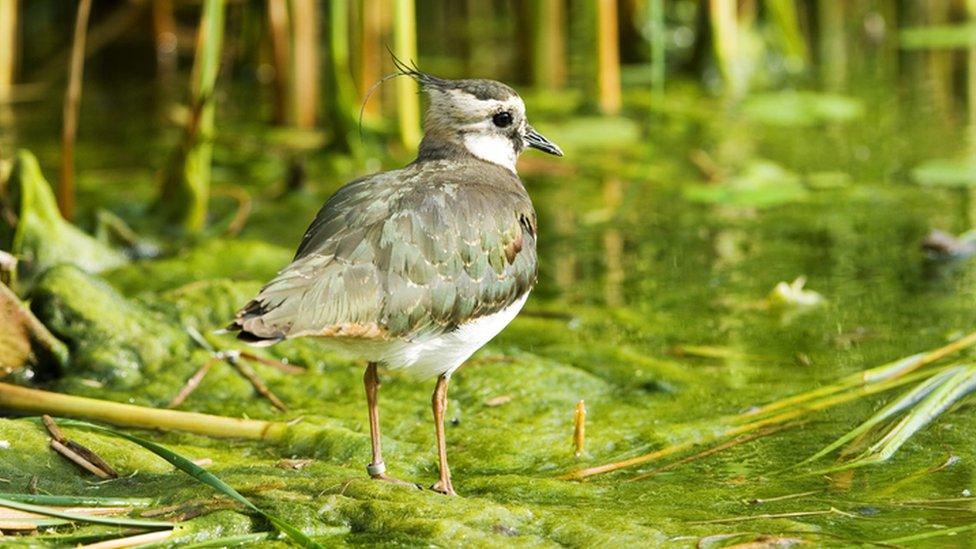Conservation: New funding given for rare species including butterflies, bats and birds
- Published
- comments

This is a lapwing - it lives in meadows, wetlands and pastures
More money is going to be given to projects in England which are looking after rare species of animals.
Rare species in England include the water vole, the crayfish, lapwing birds, Natterjack toads and certain types of butterfly.
These species are currently under threat due to environment change, such as pollution, changing temperatures, or a stronger species driving them out.
The funding by Natural England is for 拢14.5m, and is being looked after by wildlife charities, including the RSPB and the Wildlife Trust.
Which species need looking after in England?
This Natterjack toad is on the list to be looked after
Funding will be given to local projects, as different species need looking after in different areas of the country.
In Wiltshire, funding is going to be put into restoring butterfly habitats.
Butterflies need meadows and grasslands with plenty of flowers, and their numbers have been going down in the past few years.
Over in Yorkshire, it's the White-clawed crayfish that needs help. It's under threat from another species - the North American signal crayfish, which brought in diseases that native crayfish can't fight off.
Native is a term we use to describe something that lives in the place it's from.
Money is also going to go towards the lapwing, the grey-eared bat, the and the large marsh grasshopper.
A project in the Lake District has managed to re-introduce over 300 water-voles to the area
Why do these species need looking after?
Numbers of these rare species are running low, and scientists are concerned about what could happen to them if they are not looked after properly.
Because we want to protect biodiversity, it's important to make sure lots of different creatures and plants can live together safely.
Take a look at this meadow - can you think of all the parts of nature that work together to keep it going?
Biodiversity is the term we use to describe when there's lots of different types of species in one place.
They all work together - like different parts of a computer - to keep the environment safe for each other.
However, just like a computer, if you remove one part, the environment won't be able to work in the way it's meant to.
Estimates suggest 15% of the country's species are at risk of extinction.
Tony Juniper, chair of Natural England said previous recovery schemes have shown they do work.
"Nature is in drastic decline all around us. It's a dire situation, but can still be turned around. We know this because we've seen the population of the once-endangered bittern rise dramatically, the recovery of the fen raft spider and water voles successfully reintroduced to areas from where they had previously been lost," he said.
- Published6 September 2020
